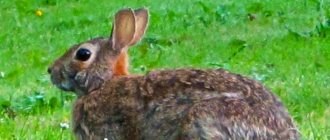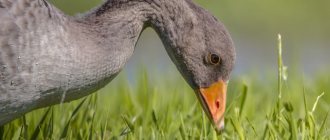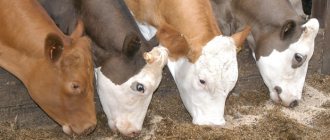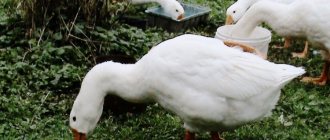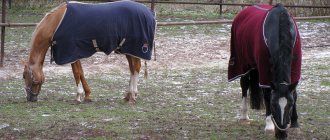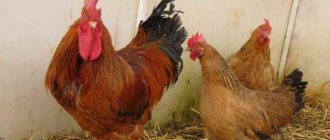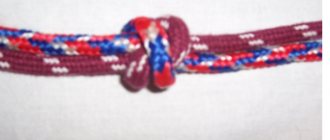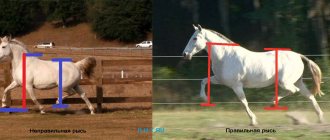How to mount a horse
To mount a horse, you stand to its left, facing the tail. Take both reins with your left hand and at the same time place your hand on the mane just in front of the saddle. With your right hand, pull the reins so that the horse does not run forward; but not so much that she backed away. The whip shouldn't fall either (it's in your left hand).
With your right hand, turn the stirrup slightly to the left and insert your left foot into it. Now grab the pommel of the saddle with your right hand, push off with your right leg and, slightly pulling yourself up, sit in the saddle. Please don't flop down, but gently lower yourself into the saddle! And do not touch the horse's croup with your right foot.
I repeat: before mounting, stand facing the horse's tail. Otherwise, when landing with the toe of your boot, you will hit the horse in the stomach. In this case, if I were the horse, I would also run away.
After landing, you need to catch the right stirrup with your foot. A beginner can look down. Later, your sock will learn to find it on its own. But then you will already know by heart which hole in the harness corresponds to the length of your leg.
Pay attention to the fact that the harness (as viewed from the horse) is turned outward. If the strap is twisted, it will not fit properly along the leg and the stirrup will slip out.
If you are already holding the reins correctly, you have time to think about your next actions. “Correct” means that the rein is not twisted and extends from the snaffle ring between the ring and little fingers into and out of the fist. The thumb on top of the “lid” covers a tightly clenched fist. The loose ends of the reins hang down to the right of the horse's neck.
Getting into the saddle
Knowledge of how to properly saddle a horse ends with information about proper seating in the saddle. It also consists of several basic rules.
- From the horse's left side, stand at the front of the horse's body.
- Take the reins in your left hand, but do not tighten, otherwise the horse will back away. With your right hand, grab the back edge of the saddle.
- Place your left foot in the stirrup and push your body up and throw your right leg over the saddle. You can additionally help yourself by grabbing the mane with your left hand.
- You need to mount your horse slowly and without sudden jolts. Once in the saddle, place your feet in the stirrups and pick up the reins. The saddled horse is ready to move.
Checking the horse's saddle
Enough theory, let's get down to business! Most often, the group enters the arena gradually, rider by rider. The horses are led on the bit, the left and right reins are passed between the index and middle fingers of the right hand. The whip is in the left hand, otherwise it would interfere with the horse, and it is generally not customary to hold it behind the boot.
If you enter the arena alone (or the first of many), you should shout loudly and clearly: “Make room, please!” Your request will be fulfilled, and at this moment no one will drive through the gate. Only after the trainer or rider on duty answers, “Passage is clear,” do you move the bolt and swing open the gate.
If you are alone (or the last in a group), then securely lock the gate behind you. An open gate is a constant danger; a poorly locked gate is an even greater danger. The first time you get bruised knees, you'll understand why. In the same order in which they entered the hall, the riders line up on the center line, facing the long side of the arena (all in the same direction!), with an interval of approximately 3 m between horses (that is, per horse's body).
Now it's time to check the quality of the saddle. The fact is that on the way from the stable your horse “lost weight” a little: when saddling, its muscles were still tense and therefore had a slightly larger volume. Now you can confidently tighten both girths by one or even two holes. All this is done from the left. Only when the last hole on the left side of the girth has been used, do they look on the right side to see if it can be tightened further.
If possible, then completely release the girth on the left, fasten it all the way on the right, and then adjust both girths on the left again to the desired tension. A little troublesome? Undoubtedly, but during training you will definitely not fall along with the saddle under the horse’s belly. To really tighten up the girth, here's a trick: rest your right elbow on your right thigh and use your arm as a lever.
This is how you check the correct length of the harness. With an outstretched arm, the fingers of which touch the saddle, the stirrup reaches the armpit. The stirrups can only be adjusted accurately from the saddle. If the girth does not budge despite your best efforts, then either another rider has changed the girth (and you will have to determine the actual length), or you yourself have grabbed the wrong saddle.
If you need to tighten your girth during exercise, stay in the saddle! Move your left leg forward a little and lift your hip, then you will reach the girth from above. The leg should be removed from the stirrup. The next step is to release the harness and adjust its required length.
You should determine the length in advance, even before getting into the saddle, since adjustments may need to be made during exercise. The length of the harness (including the stirrup) corresponds to the length of the rider’s outstretched arm from the fingertips to the armpit.
The free end of the harness should go down obliquely and tuck into the eye of the wing. If there is no eyelet or the end is short, then it is tucked under the harness so that the end faces back. Remember: buckle marks left on the strap do not guarantee the appropriate stirrup length. Belts have the ability to stretch and tear.
This is how the rider holds himself correctly: the harness is turned outward, the stirrup itself is located on the wide part of the foot, the foot is slightly turned outward. You should feel the real length while sitting in the saddle. Use a mirror and make sure the soles of your boots are level. Later, you yourself will feel what needs to be adjusted and where. Like other adjustments, riders do this without dismounting!
When checking the correct saddle and adjusting the stirrups in the arena, stand next to the horse and put one hand through the reins. In this case, the rein remains on the horse's neck; it is long enough for this. If you forget to do this, the horse will run away from you on occasion, and catching it again is not at all an easy task, even in the arena!
If your horse does run away, do not run after it, the horse still runs faster. Try to catch her by approaching slowly, speaking kindly to her, luring her with a piece of sugar and quietly driving her into a corner where it is easiest to grab the reins. And when the horse is caught, caress and praise it. She should have a strong impression that her life is much more pleasant with you than without you!
Basics of proper saddle
How to saddle a horse so that there are no problems when riding?
This process is divided into several main stages. This includes cleaning the animal, putting on the bridle and attaching the saddle itself to the back.
However, before starting saddling, it is important to take time to communicate with the horse, calm the animal, establish contact with him in order to achieve mutual understanding and goodwill.
When contact is established, you can proceed directly to putting on riding gear.
First of all, before starting saddling, each rider must carefully examine the horse for its physical condition. The slightest swelling in the area where the equipment is attached, abrasions on the withers and sides, any wounds, even the smallest ones, must be detected in time and treated with antiseptic and healing medications.
If the detected injuries cause severe discomfort in the animal, and there is a risk of aggravating the horse’s condition with a saddle or bridle, it is best to postpone horseback riding or training until the animal returns to normal. When examining, be sure to pay attention to the horse's belly and the area under his front legs, as this is where the girth straps go. If there are any damages (wounds or abrasions) in these places, then it is not worth using such an animal under saddle temporarily.
If the inspection does not reveal any abnormalities, you can begin cleaning.
The horse is cleaned with special brushes or scrapers. You need to start on the left side of the horse, moving from the head to the croup and then moving to the legs. In this case, care must be taken not to accidentally injure the animal. The mane and tail are combed with metal or plastic combs (depending on their thickness).
More on the topic: Types of horse teeth and their features
We put on the bridle
The next stage is bridling. To do this, you need to carefully put a bridle on the horse’s head. In this case, you need to be careful, you should not pull it or jerk the horse’s head, as this can lead to injury to the animal’s mouth and lips with the metal bit.
The process itself is as follows. You need to stand on the left side next to the horse and put the reins around its neck. Then, with your right hand, you should clasp the animal’s head (a little above the nose and below the eyes), and then gently pull it down. After this, you should thread the noseband, which is a special wide ring, under which there are belts with iron elements, and quickly but very carefully insert the iron into the horse’s mouth.
Some cunning horses completely refuse to open their mouths, and it is not possible to insert the iron right away. Under no circumstances should you hit the horse with a snaffle. This only irritates the animal, but does not make your task any easier. The easiest way is to press the fingers of your left (free) hand on the base of your mouth. This area contains the soft part of the gums, and with enough force the horse will open his mouth, allowing the metal bit to be inserted.
The next step is threading the animal's ears into the bridle. In this case, you need to make sure that the forehead strap is not raised too high on the forehead and is not lowered too low. If the horse has bangs, it must be threaded into the forehead, otherwise the pressed hair will tickle your horse's forehead while riding. After all the steps done, you need to fasten the chin strap.
After successfully bridling, rest a little and let the animal calm down, and then, with fresh strength, you can saddle the horse.
Sedlovka
The first step is to cover the horse's back with a special blanket to protect it from chafing when riding. It's called a saddle pad. It is important to ensure that it completely covers the withers, and the lower edge covers the shoulder.
The rivets and loops of the saddle pad should be directed towards the head. A shock absorber is placed on top of the saddle pad (a gel pad that helps optimally distribute the rider’s weight over the horse’s back), and a sweat pad is placed on top of it. The direction of laying is the same as that of a saddle pad.
More on the topic: Breed of the largest horse in the world
Next is the saddle. We take it and unfold the girth, placing it on the seat. The saddle must be placed on your back so that its rear edge coincides with the rear edge of the shock absorber. Next, we thread the cinch through the loops of the saddle pad and wrap the fastenings around the straps.
Let’s move on to the most troublesome part of the saddle – attaching the girth. It must be held under the animal's chest and fastened to the left harness. It is important to remember that two fingers should fit between the girth strap and the animal's skin.
Tightening a girth is a very difficult task, especially for beginners and if the horse is cunning and voracious. Horses are very smart animals and often take in more air to increase their volume. As a result, the girth seems to be tightened according to all the rules, but when riding the horse “deflates”, the girth sags and the rider unexpectedly flies out of the saddle. To avoid this, after saddling, lead the horse on the bit, and before getting into the saddle, check your friend. If it is loose, tighten it again.
When saddling a horse, in some cases, elements such as bandages, boots, dowels, cradles or martingales are used. And remember - a saddled horse should not be left without your supervision.
Riding arena
The Manege, formerly also called "Tattersall" (named after the inventor who built the first arena in London in 1766), is a large column-free hall, the floor of which is covered with crushed oak and spruce bark mixed with shavings and horse manure. Sand is often used instead of bark, and sometimes just sawdust.
Any of the coatings must be kept moist, especially in summer. Otherwise, both the faces and clothes of the riders will become dusty after half an hour of training. The hall usually has dimensions of 20 x 40 m. For large equestrian schools, the arena is built longer, for example, 20 x 60 m.
Along the perimeter of the arena there are sides with a height of 1.5 to 1.7 m, which are wooden sheathing, slightly inclined so that you do not skin your knees and do not scratch on it with stirrups. The first path runs along the side. The second, or internal path, is located from the first at a distance of 1.5 m, that is, 2 meters from the side. If riders are trotting in the first (outer) track, those riding at a walk must move to the inner track.
They gallop along the inner track past riders walking or trotting along the first track. These simple rules help you avoid collisions. In addition, the arena is marked with special signs painted on the sides: the letter H (or HB) indicates the middle of the long side of the arena (“half the track”). The black circle marks the middle of the short and quarter of the long sides. On the long side (about 6 m from the corner) there is a thick vertical stripe, a point of change of direction.
A large mirror is an important part of the playpen. With it, you can control your seat, the length of the stirrups, the position of your horse's legs when stopping, etc.
Manege figures are invisible lines along which riders must move in the arena. They should be followed even when you are alone in the room. This will help you evaluate what you already know and what you don't yet know. The role of markings is especially noticeable when a whole group of riders moves in the arena, obeying the trainer’s commands. This is the first thing you need to learn. Otherwise, you will disgrace yourself when one fine day the coach appoints you to lead the cavalcade. The names of the arena figures and the rules for their passage are described below.
Balance: the main goal of riding
First, you must learn to balance on a moving horse. This is the only reason for the harmony between rider and horse, which is the main goal of riding. Two completely differently built living beings should move as if they were a single organism. Take comfort: your horse also needs to get used to carrying from 50 to 80 kg of load, and maybe more. Well, now go ahead!
Have you seen how a restaurant car waiter maintains his balance while the train is moving? In the same way, you should learn to cope with the horse's movement. First of all, this is a matter of skill and takes time. The beginner is stiff and stiff, and therefore the horse’s back throws him up and down. At a trot or canter, the beginner's body begins to sway and slide to the side with each step the horse takes, the rider tenses up and, as a result, the discomfort only increases.
You should break out of this vicious circle as quickly as possible. You can't help with your mind or desire. Your body, muscles and joints must learn to “keep up” with the appropriate gait of the horse, compensating for it with an automatic counter movement. If you only get in the saddle once a week for just an hour, your body will have time to forget the acquired skills before the next session. Therefore, my advice is: attend classes at least twice a week (at least for the first six months).
Try to overcome the initial uncertainty as soon as possible. As long as you are timid and frantically cling to the horse, nothing will come of riding. Make short, daring attempts. For example, do a couple of laps without stirrups at the beginning and end of class. First at a walk, later at a trot and then at a gallop. It's not that dangerous.
The reins and stirrups, as you will read in the next chapter, are purely an aid for the horse, not for you, to regain lost balance. Whether warming up to relax muscles (such as calisthenics or ball games) makes sense for horseback riding is a point where experts differ.
Pay attention to the comments your trainer gives you during classes. Beginners very quickly get used to some bad habit, and then it takes a lot of effort to get rid of it. Also, check your position yourself a couple of times during the lesson. While you are a pedestrian, you don’t even realize how wrong you can do everything!
How to sit in the saddle correctly?
Of course, the rider is not a dummy. But there are several planting rules that you should take into account and which may become easier to understand if their meaning is explained. Let's start with landing. If you feel your buttocks while sitting in the saddle, you will find the sit bones and gluteal muscles on the right and left. Generally, your weight should be distributed evenly across each one; you should sit upright in the saddle. Don't let your back arch (it's better to hunch a little) and don't suck in your stomach.
In both cases, the springy elasticity of the spine is lost. And don't lean forward too much, which will cause your leg to go back and your hip to move too far forward. And only when you sit upright in the saddle, your center of gravity is located where the horse is used to carrying it: above its own center of gravity.
You should sit at the deepest point of the saddle, not in front or back on the cushion. Together with the saddle, the horse's sides form a fairly significant bulge. As a beginner, your legs are still too narrow. After a couple of bouts of severe muscle pain, your hips and knees will be pressed closer to your horse. And then you will have a better feel for what the horse is doing, and your seat will become more confident.
Your knees should always (always!) be pressed firmly against the saddle. In the “good old days,” a piece of paper was placed between the knee and the saddle - and woe to anyone who loses it. Check in frequently to see how your knees are doing. They should be pressed tightly against the saddle, but not tense. Otherwise, your seat will become stiff, and it will be as bad as a “twisted knee” (that is, when it is not pressed tightly to the saddle).
The legs from the knee to the heel (called the leg) lie freely at the sides, but do not lose contact with the horse's body. This means you shouldn't allow it.
Lowest point of the rider
According to ancient custom, the heel is “the lowest point of the rider.” Even people who have already developed the correct position on a horse often raise their heels too high when galloping - a sign that they have not yet achieved complete freedom of movement. Your heel should be approximately in line with your shoulder.
The ankle joint should be slightly rotated inward so that the toes are slightly turned outward. The foot looks forward rather than outward. Otherwise, you would touch the side - and, moreover, later, having earned the right to put on spurs, you would spur the horse for a long time, holding your legs a la Charlie Chaplin.
The shoulder (to the elbow) goes straight down, the elbow is close to the body, and the forearms are positioned so that the forearm and rein are in line with the horse's muzzle, without bending.
The fists are positioned straight, the thumb covers the top of the fist, the little finger looks at the navel, the back of the hand is a continuation of the forearm. You should not ride with a closed fist (with the back of your hand turned upward) or with your wrist bent outward. The fists are clenched so tightly that the horse, shaking its head, cannot pull the reins from you. The reins must not be twisted. They are grasped so that they can slide up and down between the little finger and the index finger. The thumb covers the free ends of the rein with a lid. They hang down to the right, between the horse's neck and the right rein. Make sure that your fists - most often at a trot - do not knock against each other. You should hold them calmly in front of you, a palm's distance from each other and at the same height from the bow.
The whip should be held in the hand facing the center of the arena. This way you won't scratch it along the side. When changing direction of movement, switch the whip to the other hand! The long end of the whip peeks out from under your little finger and runs diagonally down your thigh. The stroke of the whip (still give it an occasional tap!) is produced by a movement of the wrist and should interfere as little as possible with the control of the reins. The gaze is directed forward, directly between the horse's ears.
Mouth closed. The rider in the group is dumb as a fish. Only the coach's voice can be heard. You will ask questions after class... Well, that's enough for now; otherwise a thousand troubles will befall you or you will curse us for our excessive meticulousness.
Better train yourself to monitor the following points every five minutes:
- heel - lowered down;
- socks - forward and up;
- knees - pressed tightly;
- elbow - at the hip;
- the body is straight, the lower back is bent;
- fists are clenched and placed vertically.
Monitor colleagues critically; then you will see what not to do. And if there is a person in the group who sits on a horse at ease and relaxed, you will have something to learn.
How to mount a horse?
So, the horse is saddled, and it’s time to get into the saddle.
This can cause some problems for beginners, so it is better to use a landing pad at first. In addition to a more comfortable fit, it also reduces the load on the horse's back. When learning to mount a horse, ask an experienced person to hold the horse's head so that it does not start moving before you get into the saddle.
The horse is always mounted on its left side. In this case, the left leg must be inserted into the left stirrup, and then the right leg must be thrown over the horse’s back and placed in the right stirrup.
If there is no one to help during boarding, firmly hold the reins in your left hand and control the animal’s head. At the same time, try not to pull too hard, otherwise the horse will start to back away.
Once in the saddle, first of all, find a position that is most comfortable for you and allows you to maintain good balance. The back should be straight. In other words, your ears, shoulders, pelvis and heels should be in line. Shoulders should be straightened, and the main weight should be transferred to the buttocks.
When sitting in the saddle, it is important to position your legs correctly.
They should seem to hug the body of the animal. Knees turned outward immediately give away newcomers. Your toes should be pointing up and your heels, on the contrary, pointing down.
You can practice on a step or any other elevation. Stand with your toes on the edge and lower your heels down, maintaining your balance. This is the correct position of the feet in the stirrups.
Riding a rider without stirrups
Riding without stirrups is a great way to strengthen your riding position. Therefore, I decided to end the section on planting with this topic. When riding this way, your legs from the knee should be as low as possible. The more relaxed your muscles and ligaments become over time, the lower you will be able to release the harness, the more clearly you will feel the horse’s movement and the more accurately you will control it.
Therefore, you should not take the coach’s requirement to ride a couple of laps without stirrups as a nagging. It's more of a compliment: he thinks you're capable or brave enough to do it. However, it's not as dangerous as you might think.
Try to ride on your own volition with stirrups thrown over the saddle. First step. Release your legs from the stirrups and cross the harnesses crosswise in front of the saddle on the horse's neck. See - everything is not so terrible at all!
First let your feet just hang down, the command “Heels down!” will enter into your flesh and blood later. Even without stirrups, place your toes in the correct position. So, now try to trot, and after two lessons, switch to a gallop. Then keeping your balance while turning will be a pleasure for you.
On the command “Keep your feet in the stirrup!” the stirrups are lowered back down from the saddle and caught with their feet. Without peeking, the foot should find the stirrup itself. Only one short glance is allowed: to make sure that the straps are not twisted.
How to properly control a horse?
Now you know how to sit in the saddle. True, it will take some time before your hands and feet learn to follow these rules. But how do you get a horse to do what it should do?
We are not going to discuss how a young horse is taught to “walk under saddle”, that is, ridden. After all, you will be dealing with a horse that, in principle, has already been trained; She will sometimes even react more quickly to the command of a trainer located 20 meters away from her than to what you painfully try to beat out of her with your heels.
At the very beginning I wrote that the horse is a very obedient creature. Disobedience in most cases is due to complications in mutual understanding. Perhaps the rider is not communicating correctly to the horse what he should do. Or he's not persistent enough. In any case, if something doesn’t work out, then 10:1 it’s the rider’s fault.
To control your horse, to explain to it what it should do, there are “messages”. There are three of them: body, leg and rein.
This series is full of meaning. Because the harmony of joint movement depends on your ability to correctly move your center of gravity in accordance with the horse’s center of gravity. Prompting signals with legs are much more important than restraining actions with a rein. After all, you must first force the horse to move energetically before you have the opportunity to slow down and change this movement. This applies to horsemanship in general - and most of all to the beginner's horse, who has just begun to conquer, who needs to be really firmly taught what is required of him.
Controlling a horse on horseback
Now that we have learned how to saddle a horse, let's talk a little about how to control a horse. To learn to ride a horse, a person needs two skills: a sense of balance and rhythm. Unfortunately, people who possess these skills on the very first day of working with a horse are extremely rare. For everyone else, special exercises will help, which serve to develop the correct seating and control of the horse.
By the way, about landing. This is a very important element of horse control for those who want to ride correctly. A rider who understands the animal well is able to turn the horse around with one shoulder movement. Next we will talk about the basic means and forms of horse control.
Control methods
How to learn to ride a horse and what you need for this are questions that all equestrian beginners ask. Working with a horse depends on three pillars: reins, leg, body. Let's talk about them in more detail.
In addition, there are auxiliary elements for working with animals: a whip and spurs. But they must be used very carefully, only by those riders who well understand with what force, in what situations they should be used and how to control the animal after their use.
Important commands
A beginner in equestrian sports needs to be able to perform three basic elements: sending forward, stopping and turning.
When riding, sending a horse forward at any gait is not at all difficult. To do this, it is necessary to tighten the rein until it stops sagging freely, and its length is freely controlled by the rider’s seat. After this, you need to press the leg and push. Remember that at all gaits, riders use different pushing techniques. So, for some people it is more convenient to send the horse into a gallop with one sharp lunge, while for others it is easier to use a series of less pronounced pushes.
When turning, the rider picks up the reins a little on the side where he plans to turn. Remember that you cannot “twist” the animal’s head with the reins in the desired direction. At the same time, you must not let go of the opposite rein, otherwise the animal will not turn within the radius you need. When turning, the rider's leg also works. When turning to the right, for example, the right leg holds the animal against the wall, and the left leg gives the impulse for movement.
The stop is performed by feeding the rider's body with the reins drawn up and the leg pressed deep back.
Frame. Schenkel. Occasion
1. Body. So, when sending with your body, the center of gravity of your body must be shifted in a certain way relative to the center of gravity of the horse. If you sit upright on a horse, your center of gravity is directly above the horse's center of gravity. By moving your center of gravity to the right or left, you encourage the horse to move in that direction: he is trying to restore the balance of your body again. The same thing happens in motion: you must “fit into the turn,” that is, move the center of gravity inward.
This occurs when you shift your weight to your left or right buttock and load the corresponding stirrup at the same time. A common mistake is to simply lean to the side instead. This leads to the opposite result.
2. Schenkel. When pushing with your leg, you guide the horse with the movement of your legs. Your shins act on the horse's corresponding hind legs in the girth area, urging the horse forward: the pressure of the leg encourages the horse to take a wider, longer, higher step. The pressure is most effective at the moment when the horse's hind leg leaves the ground. The leg can also prevent the horse from moving to the side: apply more pressure on the leg and this will encourage the horse to go in the opposite direction.
3. Reason. Sending with the reins has an effect on the horse's mouth. At the same time, you turn or stop the horse, depending on the circumstances. If, as a beginner, you do not yet give a very clear command with your body and legs, then when sending with the reins the opposite is true: in most cases they are used too strongly, too harshly, sometimes even painfully for the horse. Therefore, it is necessary to constantly be “in contact” with the horse’s mouth.
It is unacceptable for you to lean back and pull on both reins - control them exclusively by turning your fist (as if you were rotating a screwdriver). Pulling the reins requires the same amount of effort as lifting a quarter kilogram of weight. Of course, there are horses that have very sensitive mouths and need a softer rein command. But among horses there are more of those whose mouths become “unfeeling.”
Both the leg and the rein can be used in pairs. For example, when moving away, you simultaneously give both reins “slack”. Or at the trot you move your legs evenly to the beat. But more often than not, the right and left reins produce different effects, as do the legs.
For example, your horse should often coil, that is, bend the cervical and dorsal vertebrae. Remember right away: with your hands through your mouth you work on the front of the horse, with your legs on its back. In other words: the shoulders of the horse and the rider must “think” in parallel, just like the legs and hind legs of the horse.
However, the horse also has its own opportunities to express its disagreement with your commands. If she shakes her head, it means “the reins are too tight, the hands are too restless.” If one day she fights off your spur with her hind legs, it will mean that you spur her too often and thoughtlessly. By wagging her tail, she makes the same thing clear.
How to saddle correctly?
Saddling a horse is divided into several main stages: cleaning, putting on the bridle, securing the saddle. But before you start equipping your horse, you need to communicate with it and win it over. We will talk about each of the stages in more detail.
The first thing any rider should do before mounting a horse is to inspect the animal. Any swelling, abrasions on the sides and withers, wounds should be examined and treated with a disinfectant.
In addition, if these formations prevent the horse from feeling comfortable, then riding with a saddle should be canceled until the wounds have healed. You also need to examine the horse’s belly, the area under the front legs (the place where the girth will go). If you notice any abrasions there, you will also have to cancel the workout. After this, you can clean the animal.
Next, you need to carefully put on the bridle. Be very careful, do not pull on the bridle, do not jerk the horse, you can injure his mouth with the metal bit. Stand next to the animal, always on the left side. Place a rein around the animal's neck. With your right hand, grab the horse's head at a level above the nose, but below the eyes and smoothly pull it down a little. Thread the capsule (a special wide ring under which the belts with iron are located). Then quickly but very carefully introduce the iron into the animal's mouth.
If a cunning horse refuses to open its mouth to take the iron, then there is no need to knock on its teeth with a metal bit. Believe me, this will not improve your pet’s mood; it is better to press the fingers of your left, free hand onto the horse’s mouth at the very base. There is a soft part of the gums there, and with enough pressure the horse will open his mouth and take a bit or other type of bit.
Read also: Horse teeth: anatomy, age determination
After this, thread the animal’s ears through the bridle, making sure that the forehead strap does not come out too high on the horse’s forehead and does not hang low. In addition, it is worth putting bangs into the forehead, if your pet has them. This will allow the animal to get rid of excess tickling. Finally, fasten the chin strap.
Now that you have successfully handled the bridle, you can exhale a little, gain confidence and strength (which you still need to tighten the girth and successfully ride) and begin to secure the saddle.
First of all, place a saddle pad on the horse’s back - a special blanket that prevents the horse’s back from abrading. Make sure that the cloth completely covers the withers, and the lower edge of the saddle pad is at the shoulder.
The saddle pad must be placed so that the loops and fastenings are directed towards the animal’s head. On top you need to put a shock absorber (a special gel pad designed to better distribute the weight over the animal’s back) and a sweat pad. They should be positioned in the same direction as the saddle pad.
It's time to get on with the saddle. Take it in your hands by unrolling the girth and placing it on the seat. Place the saddle on the horse's back so that the rear edge is at the very end of the shock absorber. Thread the girth through the loops of the saddle pad and wrap the fasteners around the straps. Then comes the fun part of saddle riding – attaching the girth. Having passed the girth under the horse's chest, begin to fasten it to the girth on the left side. Remember that there should be two fingers between the girth itself and the skin of the animal.
From the video “All about management” you will learn a lot of useful information.
Among other things, elements such as dowels, boots, bandages, martingale or crutches can be used in the saddle of a horse. Remember that a saddled horse should not be left unattended.
Firm fit: arch your lower back
It would be a pointless exercise to work through all these commands separately. Your horse would then have no idea what he was supposed to do. Multiple teams should always interact. We will proceed from this. But first, you should become familiar with one more concept: arching your lower back. This is something you should learn by heart and practice before you get into the saddle. A lot depends on this - from the first departure to the stop at the end of the lesson.
When you swing on a swing, you strain your lower back. The same thing happens when you sit on a stool and try to tip it forward. Don't arch your lower back too much as this will have the opposite effect. Sit on a stool, spread your legs slightly and try to tip it forward only by tensing your lower back. If you succeed, then you have understood the theory of loading and have taken the first practical step.
Each horse reacts differently to the action of the rein. I have already written about the different sensitivity of the mouth. But the same applies to other types of messages. Thus, you must constantly monitor the successful execution of your commands. You must feel the horse: how it reacts and whether it reacts at all. The end result should be almost invisible commands. The fewer commands you (and your horse) can manage with, the better. The decisive factor is not the strength of the message, but the fact that they are delivered at exactly the right moment.
